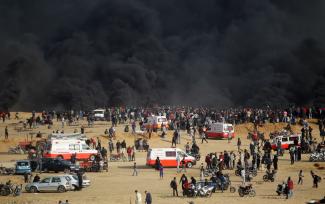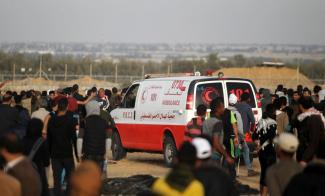Years of blockade and other movement restrictions on people and materials, including medical resources, the deepening intra-Palestinian political divide, and a chronic energy crisis, have led to a serious deterioration in the availability and quality of health services in the Gaza Strip. The Gaza health sector suffers from chronic shortages of certain equipment and supplies, including antibiotics and chemotherapy drug stocks. According to the World Health Organization (WHO), there has also been a serious deterioration in the “social determinants of health”, with “water from the aquifer basically unfit for human consumption, sewage flows largely untreated into the Mediterranean and the economy is stifled.”
The Monthly Humanitarian Bulletin | May 2019
World Health Organization estimates that between 1,209 and 1,746 GMR patients, will need some form of specialized tertiary treatment. The permit approval rate for patients injured during GMR demonstrations is significantly lower than for other Gaza Patients seeking healthcare in Israel and the West Bank. Entire Neighbourhood of Wadi Yasul in East Jerusalem facing threat of demolition.
In this document
As reported in last month’s Bulletin, some 60 homes and other structures were demolished in East Jerusalem in April, due to lack of building permits. This is the highest number in a single month since OCHA began to systematically record demolitions in 2009. More people have already been displaced in East Jerusalem in the first four months of 2019 than in all of 2018. Although no demolitions occurred in East Jerusalem in May, it has been the practice of the Israeli authorities to refrain from conducting demolitions during the month of Ramadan and demolitions are expected to resume after the Eid holiday in June.
Since late March 2018, thousands of Palestinians have participated in the weekly Great March of Return (GMR) demonstrations in the vicinity of Israel’s perimeter fence between the Gaza Strip and Israel, calling for the Palestinian right of return and the ending of the Israeli blockade. The large number of casualties among unarmed Palestinian protestors, in particular the high number injured by live ammunition -in circumstances that did not appear to constitute an imminent threat of death or serious injury to Israeli soldiers behind the fence, has raised concerns about excessive use of force by Israeli forces. The first article in this month’s Bulletin examines the humanitarian impact of these injuries on the individuals themselves and the implications for the overstretched Gaza health system.












